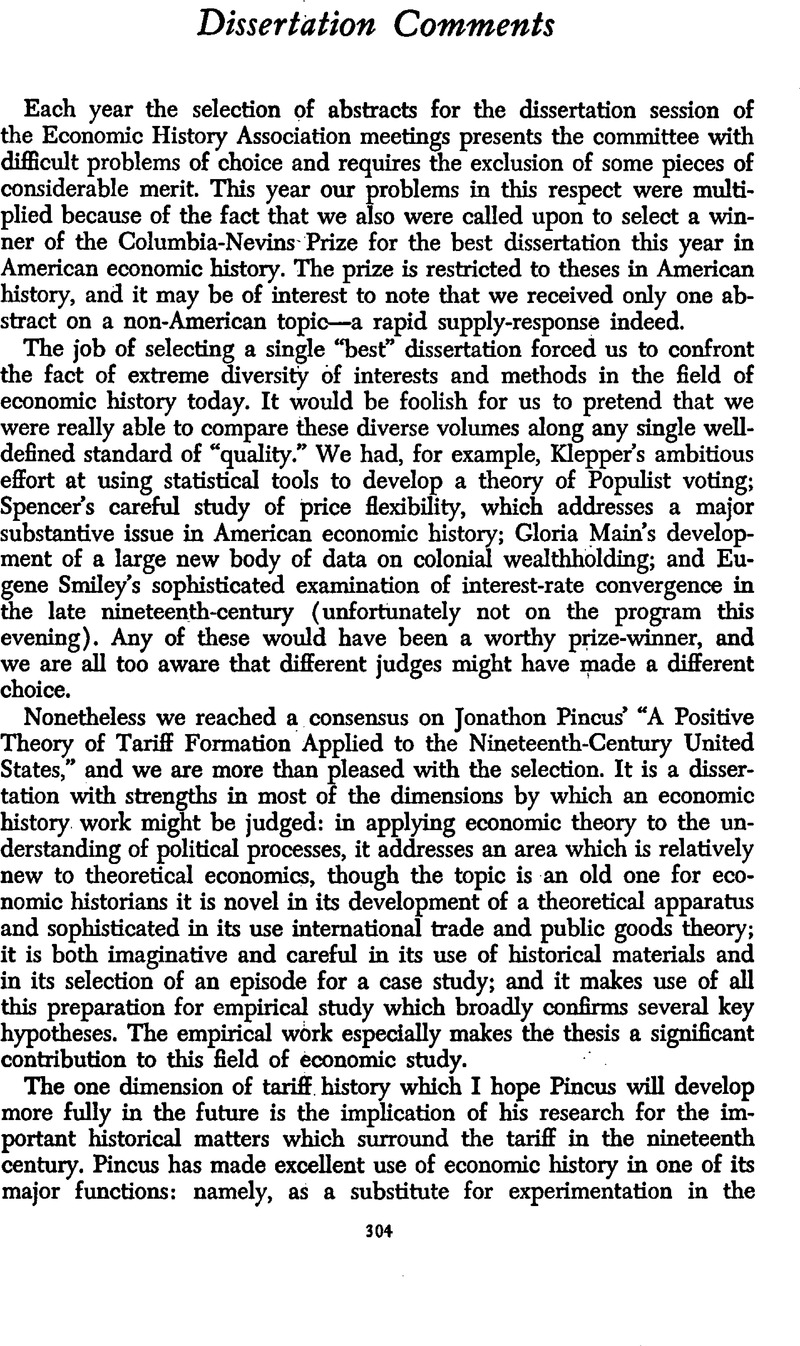Article contents
Dissertation Comments
Published online by Cambridge University Press: 11 May 2010
Abstract

- Type
- Papers Presented at the Thirty-third Annual Meeting of the Economic History Association
- Information
- Copyright
- Copyright © The Economic History Association 1974
References
1 Lockridge's, K. work on “Land, Population, and the Evolution of New England Society,” in Past and Present, 39 (1968), 62–80Google Scholar, stresses land scarcity as a colonial reality. But he treats the late colonial period, by contrast with an earlier time of land abundance, and focuses on eastern Massachusetts, with more people and perhaps less good soil than Hampshire County. As he points out, and this is relevant to Leet's work especially, the crucial issue is probably not land scarcity as such but apparent reluctance to migrate toward the frontier. I return to this point below.
- 1
- Cited by


